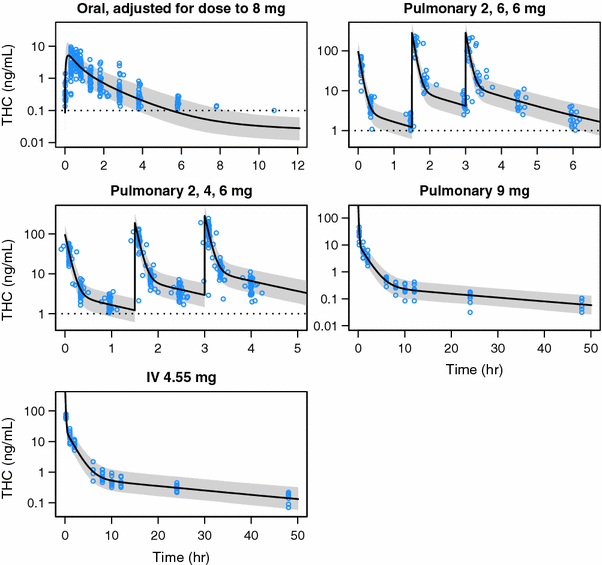

This means that such differences were not explained by the model prior to adding the variable and were part of random interindividual variability. The purpose of adding independent variables to the model, such as CL CR in Equation 10.7, is usually to explain kinetic differences between individuals. Any improvement in the model would be reflected by a decrease in the objective function. A global measure of goodness of fit is provided by the objective function value based on the final parameter estimates, which, in the case of NONMEM, is minus twice the log likelihood of the data.

The fitting routine makes use of the ELS method. NONMEM is a one-stage analysis that simultaneously estimates mean parameters, fixed-effect parameters, interindividual variability, and residual random effects. A covariance between two elements of η is a measure of statistical association between these two random variables. Each pair of elements in η has a covariance which can be estimated. Each ε variable is assumed to have a mean zero and a variance denoted by σ 2. The second level represents a random error (ε ij), familiar from classical pharmacokinetic analysis, which expresses the deviation of the expected plasma concentration in subject j from the measured value. The first level, described previously, is needed in the parameter model to help model unexplained interindividual differences in the parameters. There are, however, two levels of random effects. These equations can be applied to subject k by substituting a k for j in the equations, and so on for each subject. Where C L ¯ and V d ¯ are the population mean of the elimination clearance and volume of distribution, respectively, and η CL and η j V d are the differences between the population mean and the clearance ( CL j) and volume of distribution ( V dj) of subject j.


 0 kommentar(er)
0 kommentar(er)
